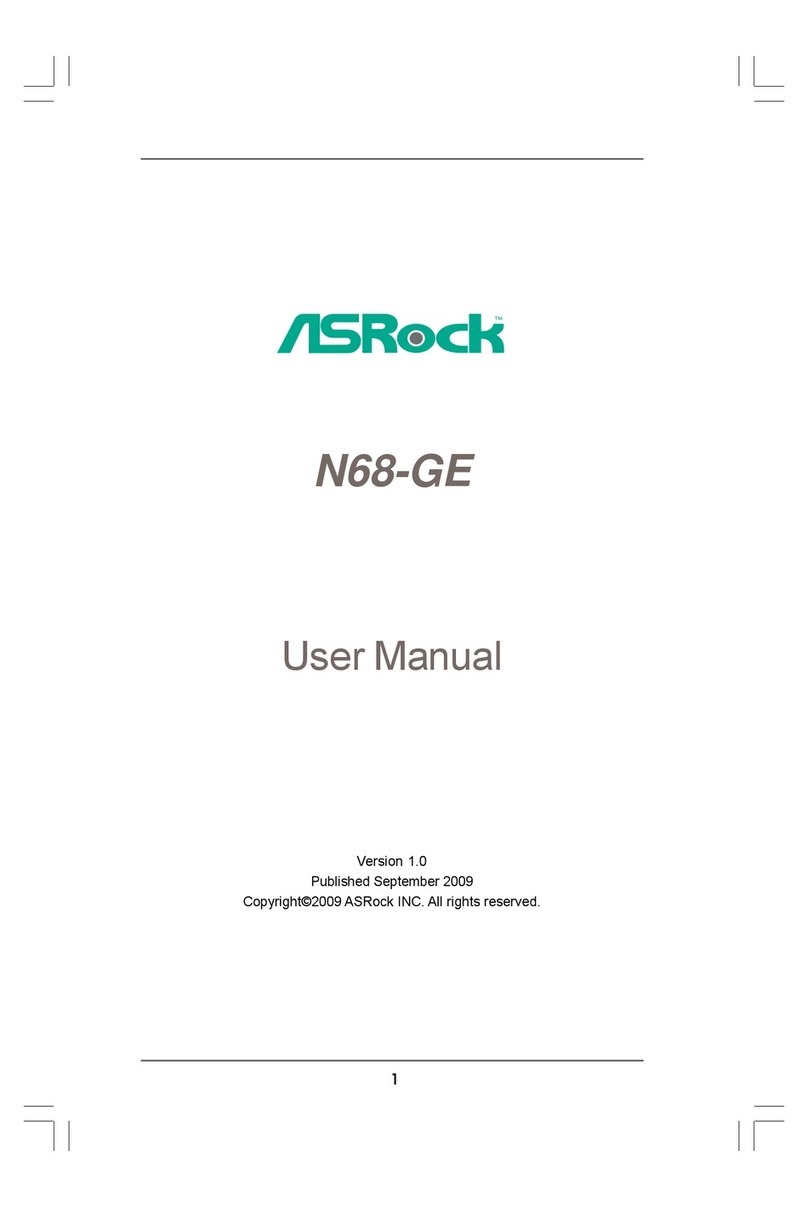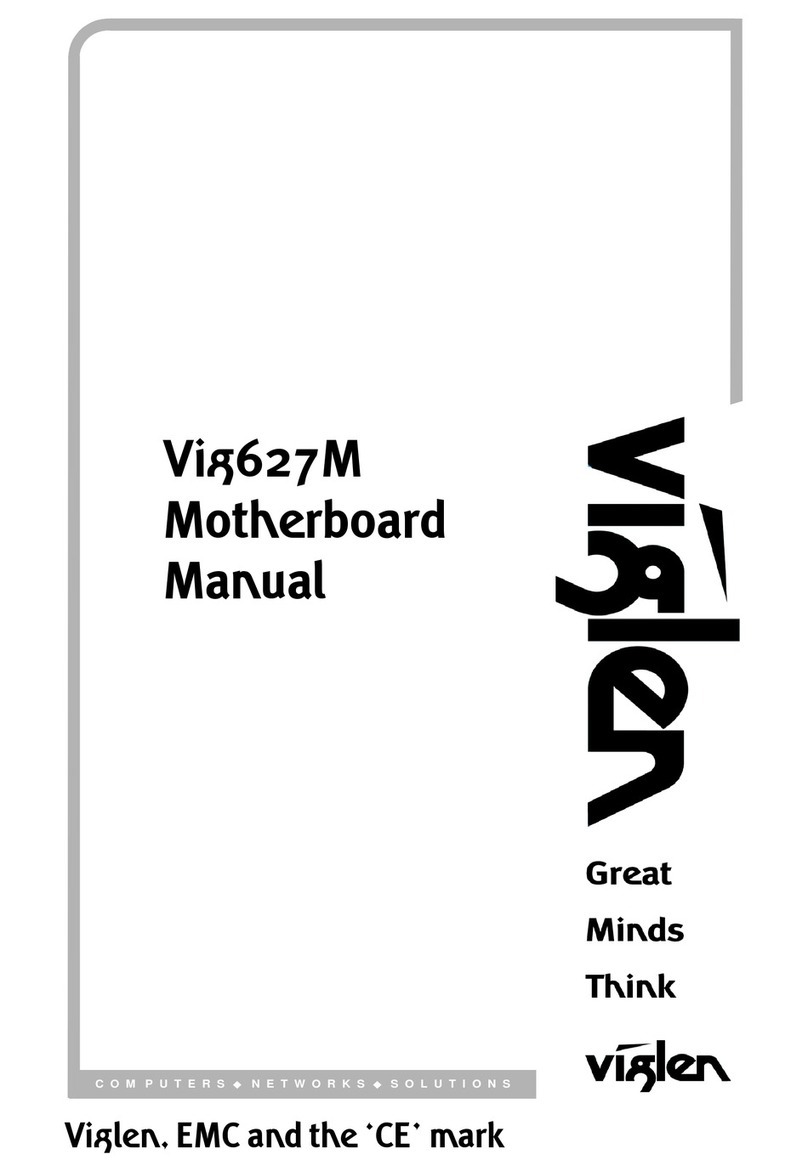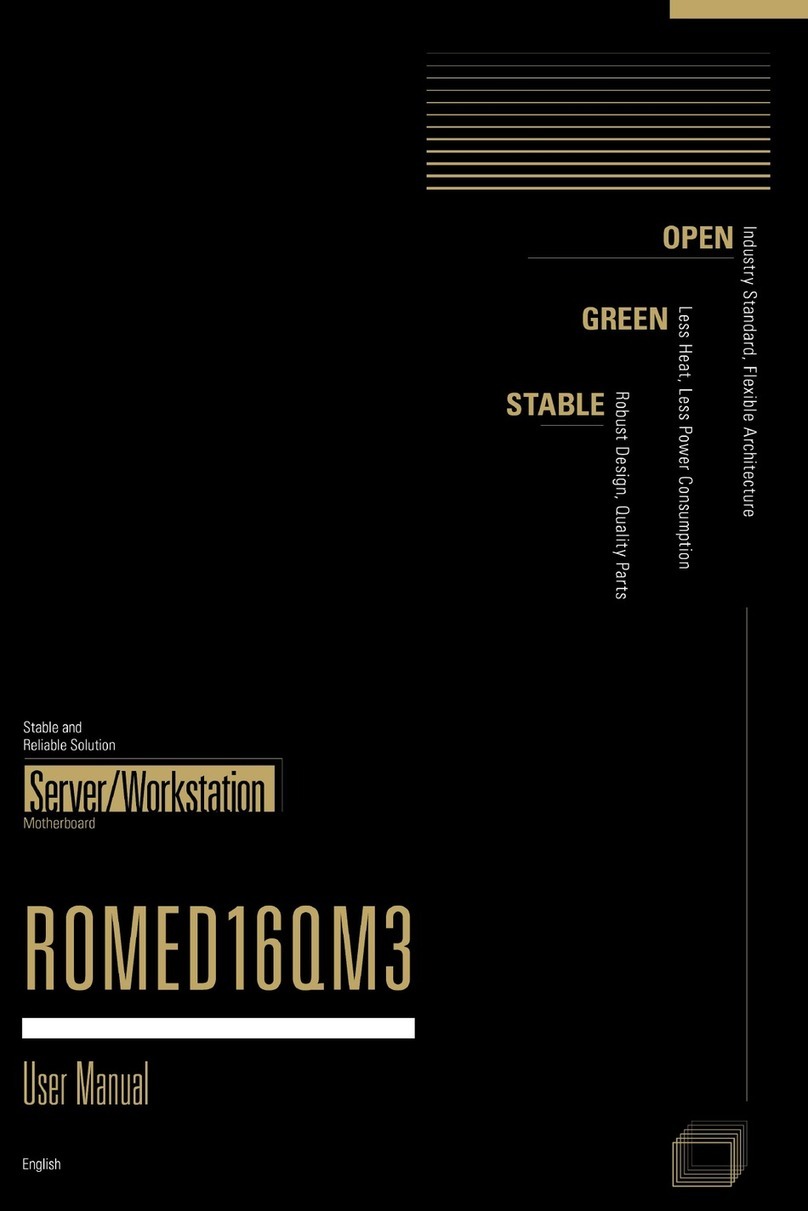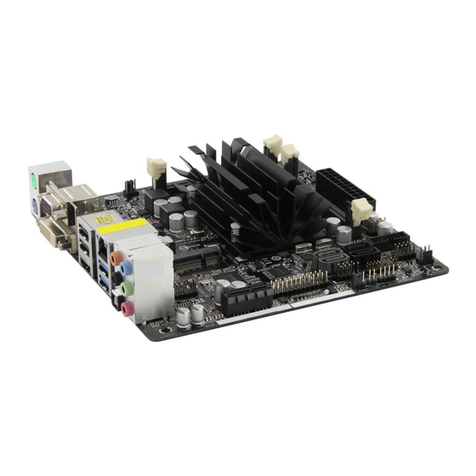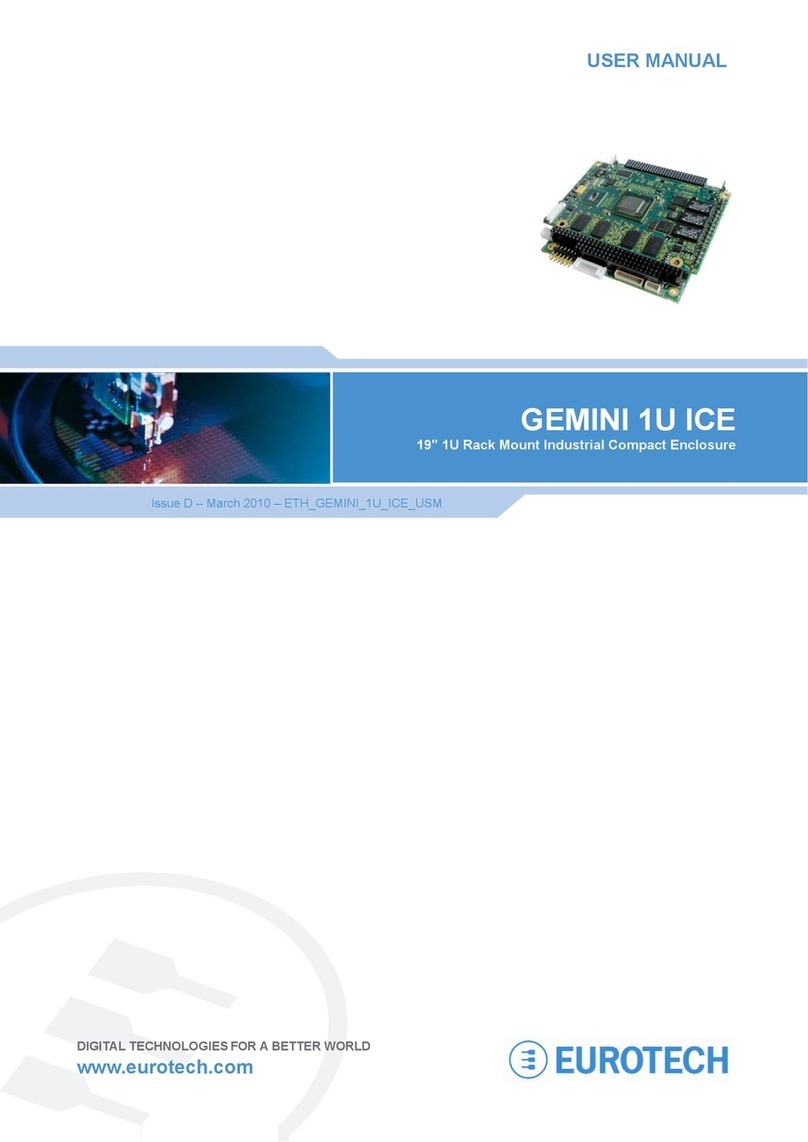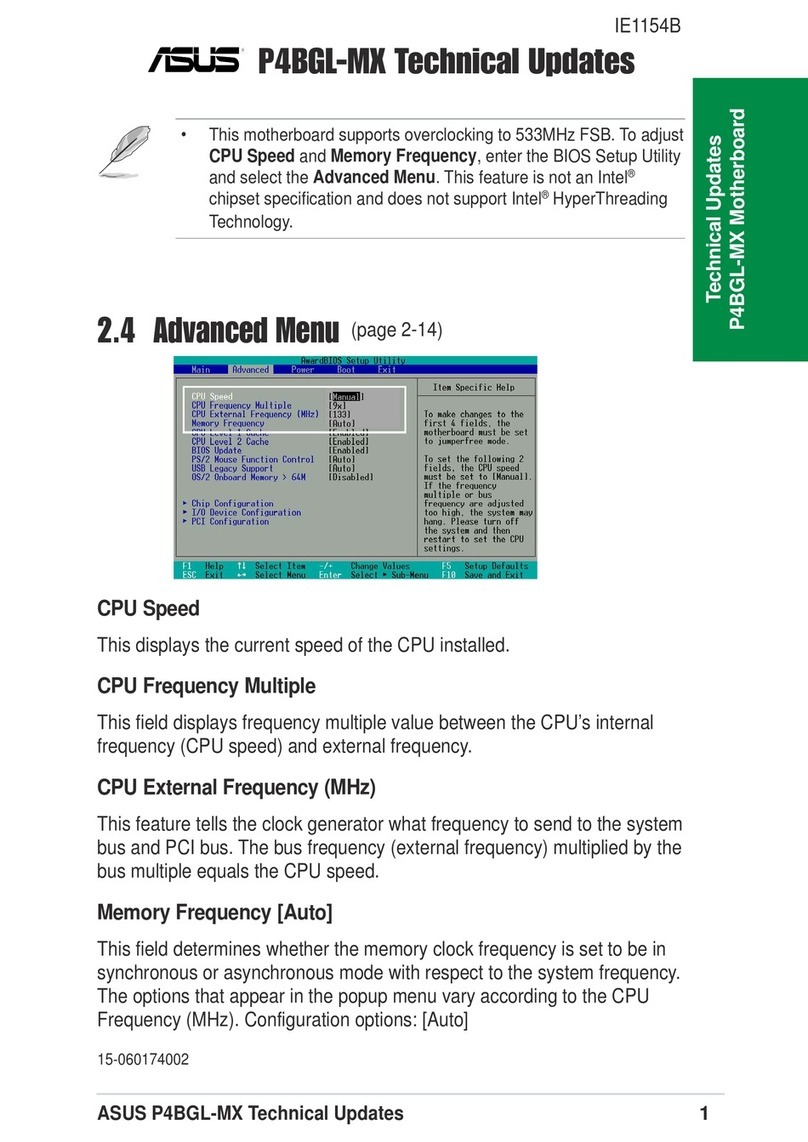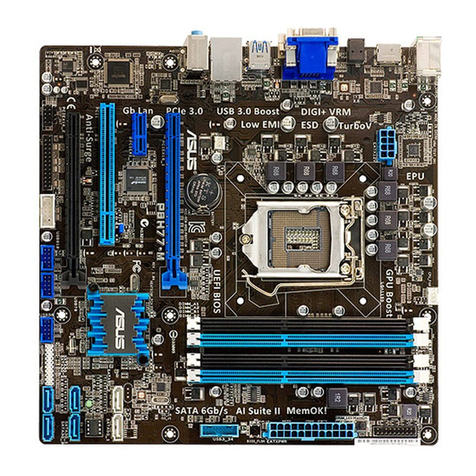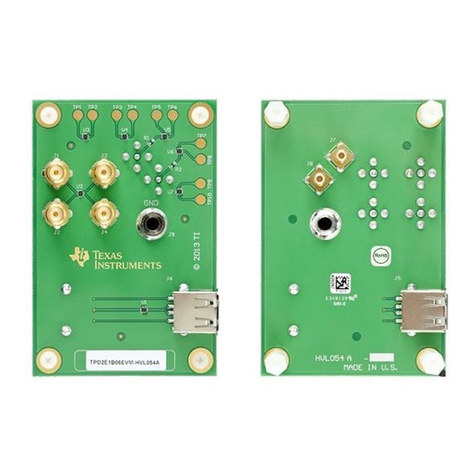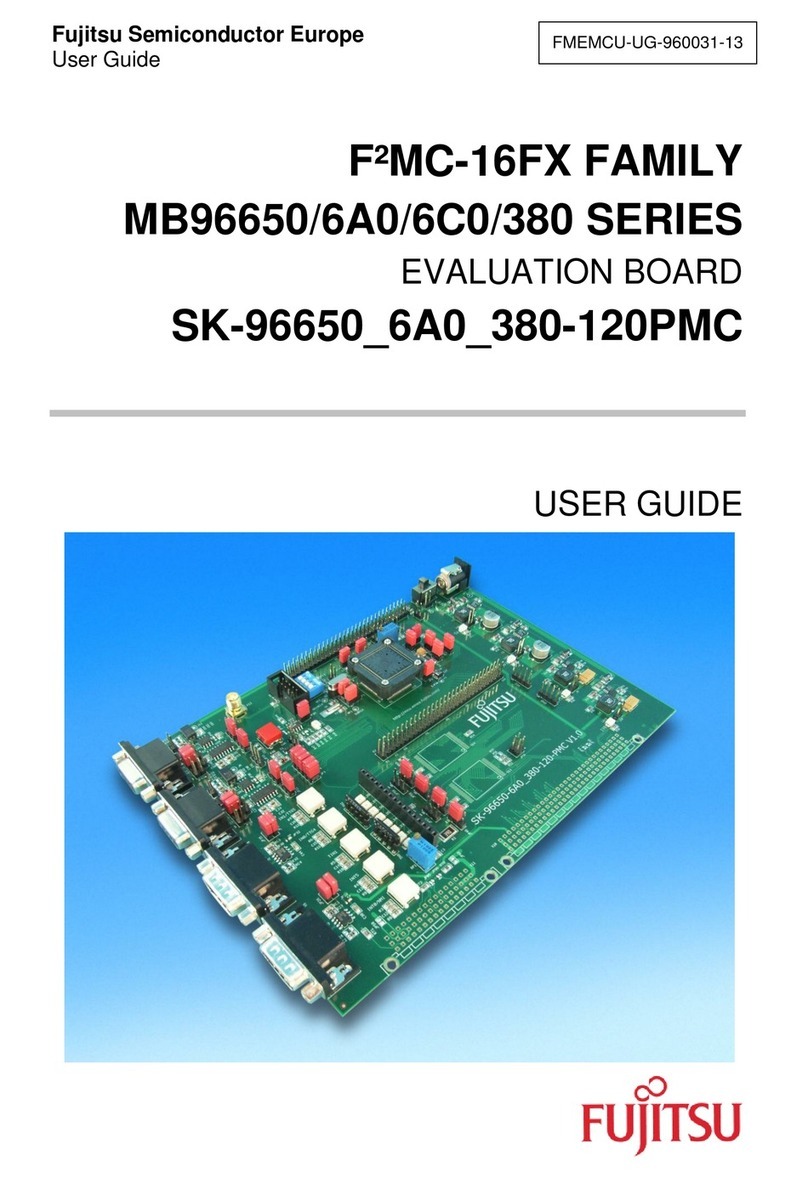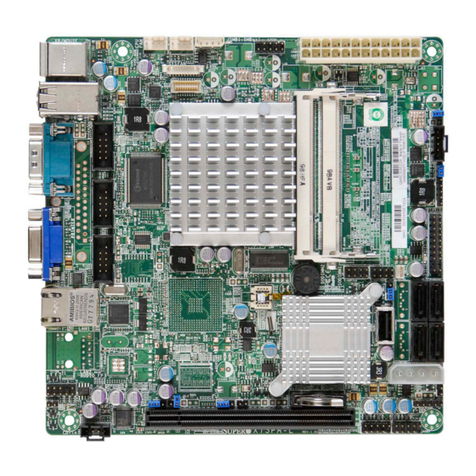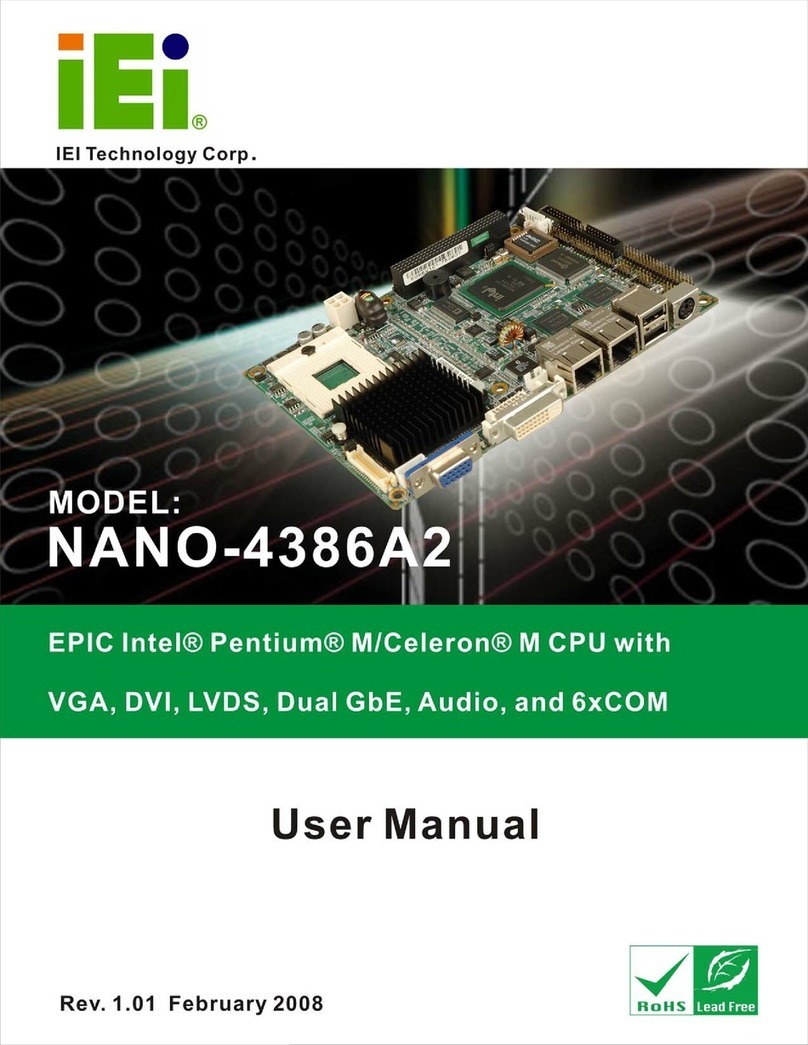Glitch Works GW-OSI-RAM1 User manual

Glitch Works GW-OSI-RAM1
User’s Manual and Assembly Guide
Revision 1, 2017-09-04
c
2017 The Glitch Works
http://www.glitchwrks.com/
This manual is licensed under a
Creative Commons “Attribution-NonCommercial-ShareAlike 4.0” license.

Contents
1 Introduction 2
2 Configuration 2
2.1 ConfiguringI/O....................................... 3
2.2 MemoryManagement.................................... 3
2.3 PrototypingArea...................................... 4
2.4 12-BitOperation ...................................... 4
2.5 Inverted and Non-Inverted Data Busses . . . . . . . . . . . . . . . . . . . . . . . . . . 4
3 Assembly 5
3.1 Assembling the GW-OSI-RAM1 . . . . . . . . . . . . . . . . . . . . . . . . . . . . . . 5
3.2 0-64K Memory, no Memory Management or ROM Overlay . . . . . . . . . . . . . . . 6
3.3 Memory Management or ROM Overlay Support . . . . . . . . . . . . . . . . . . . . . 6
3.4 I/OSupport......................................... 7
3.5 12-BitSupport ....................................... 7
3.6 InsertSocketedICs..................................... 7
4 Initial Checkout and Testing 8
4.1 Troubleshooting....................................... 8
4.2 RepairandService ..................................... 8
5 Parts List 9
Assembly Drawing 10
Schematics 11
1

1 Introduction
The Glitch Works GW-OSI-RAM1 is a universal RAM/ROM board for the Ohio Scientific bus. It
includes the following features:
•Fully static operation
•No expensive or hard-to-get components (8T26 buffers, etc.)
•8- and 12-bit support
•Support for inverted and non-inverted data bus
•Optional bank switching
•ROM support/overlay
•Mappable around existing RAM, ROM, and I/O in 4K segments
•Header for lamp register
•General purpose prototype area
The GW-OSI-RAM1 uses JEDEC pinout 32K x 8 memory devices, such as the 62256 SRAM, 27256
EPROM, or 28256 EEPROM. Memory can be enabled in 4K segments to map around existing RAM,
ROM, and I/O. The board can be configured to mix RAM and ROM in two separate banks. It can be
used with any system that uses the Ohio Scientific bus, including the SYS bus of the Ohio Scientific
560Z Processor Lab. Full 12-bit operation allows it to be used with the OSI 560Z in PDP-8 compatible
mode.
2 Configuration
Due to its flexibility, the GW-OSI-RAM1 contains a large number of DIP switches and several
jumpers. Memory management requires jumper wires to be inserted. The following table explains
switch and jumper function. Please refer to the assembly drawing for the locations of switches and
jumpers.
Name Function
SW1 First bank 0-32K, each position enables a 4K segment when ON
SW2 First bank 32-64K, each position enables a 4K segment when ON
SW3 Second bank 0-32K, each position enables a 4K segment when ON
SW4 Low byte of I/O address, ON = 1
SW5 High byte of I/O address, ON = 1
SW6 Second bank 32-64K, each position enables a 4K segment when ON
J1 I/O address size selection, 1-2 for 1 byte, 2-3 for 2 bytes
J2 I/O address decode enable, closed enables I/O decode
For instance, if you wished to enable 12K of RAM starting at 0x0000 in the first bank, close positions
1, 2, and 3 of SW1.
Any memory segment that contains RAM, ROM, or I/O on another board should have its segment
disabled on the GW-OSI-RAM1. Consult your system’s documentation to determine which segments
are in use for the system and board set you have. Generally, the 4K segment at 0xF000 will be
required for I/O devices and boot ROMs, and should be disabled on the GW-OSI-RAM1. Video
systems should disable the two 4K segments at 0xD000 and 0xE000. Systems with ROM BASIC
should disable the two 4K segments at 0xA000 and 0xB000.
2

For systems that include RAM on the CPU board, you must either disable the RAM on the CPU
board and use only the RAM on the GW-OSI-RAM1, or disable the segments occupied by CPU board
RAM. The procedure for disabling CPU board RAM will depend on the particular CPU board in
use. It is usually easier to disable those segments on the GW-OSI-RAM1, unless there are suspected
reliability problems with the CPU board’s onboard RAM.
2.1 Configuring I/O
SW4, SW5, J1, and J2 control I/O configuration. If no I/O is desired, remove the shunt from J2 –
all other I/O settings will be ignored if J2 is open.
If J2 is closed, SW4 specifies the low byte of the I/O address, while SW5 specifies the upper byte. If
the I/O device is write-only (for example, a GW-OSI-HLR1 Hex Lamp Register), it can be addressed
over existing RAM on the GW-OSI-RAM1 but not on another RAM board. If the I/O device is read-
only or read/write, it must not overlap RAM. The GW-OSI-RAM1 provides memory management
inputs in the memory address decoding sections to allow a read-only or read-write I/O device to be
inserted into RAM on the GW-OSI-RAM1. These memory management inputs will not work for
RAM on other boards.
J1 selects the I/O size. Placing a shunt between pins 1 and 2 set it to one byte, a shunt between
pins 2 and 3 set it two two bytes. Determine this setting from the module you plan to install in J3,
or your own needs if using the prototype area.
2.2 Memory Management
The GW-OSI-RAM1 supports Ohio Scientific 1 MB memory management, which is implemented on
some OSI CPU boards, such as the OSI 510. Most smaller systems will not use memory management
and will be limited to 64K of RAM, ROM, and I/O devices.
If OSI 1 MB memory management is not being used, the second bank on the GW-OSI-RAM1 can
be used for ROM overlays. This allows mixing RAM and ROM on the same board, in 4K segments.
Resistors R2 - R7 control which banks are active by default, and must be configured for ROM
overlays, if desired. The following table describes possible configurations of R2 - R7:
Resistors Installed Function
R2, R3 Default configuration, first bank enabled at 0x0000 -0xFFFF
R4 Second bank 0-32K enabled, used for ROM overlay
R6 Second bank 32-64K enabled, used for ROM overlay
R5 Second bank 0-32K to be controlled by custom memory management
R7 Second bank 32-64K to be controlled by custom memory management
For a 64K system with no memory management, R2, R3, R4 and R6 are installed, allowing 0-64K of
RAM with 0-64K of ROM overlays. For a system with memory management, R2, R3, R5, and R7
are installed, and jumper connections are made from U3 and/or U6. Consult the schematics for 1
MB memory management jumpering.
3

2.3 Prototyping Area
A prototyping area is provided on the GW-OSI-RAM1, and can be used whether or not a mezzanine
expansion module is to be installed, provided devices under the mezzanine module are short enough.
The prototyping area consists of a section of plated-through holes, sized to fit the leads of a 2 W
resistor without drilling. This allows multiple wires to be inserted in a single hole, making point-to-
point prototyping very easy.
Header J3 provides buffered data lines, address lines A0 and A1, and read/write signals for both the
mezzanine modules and prototyping space. The *IOSEL signal is used by mezzanine modules, but
may be used by the prototype area if no mezzanine module is installed, or if the circuitry in the
prototype area is designed to co-exist with the mezzanine module in use.
Consult the schematics for J3 pinout and signal functions.
2.4 12-Bit Operation
The GW-OSI-RAM1 was designed with 12-bit operation in mind, for use on the SYS bus of the OSI
560Z Processor Lab. Addressing and configuration is the same as 8-bit mode, but the data buffer at
U24 must be installed, and RAM or ROM must be installed in U14 - U17 to provide the additional
upper 4 data bits. Refer to the assembly drawing for addresses covered by U14 - U17.
While extended memory management is techincally possible in 12-bit mode, no current boards im-
plement it.
Expansion connector J3 supports 12-bit data operation, and modules such as the GW-OSI-HLR1
Hex Lamp Register will display 12-bit data if the system controlling the GW-OSI-RAM1 supports it.
Leaving 12-bit operation enabled when using the GW-OSI-RAM1 in an 8-bit system is acceptable,
as long as the four additional data lines used in 12-bit operation are not used for other purposes.
Consult your system documentation and/or schematics to determine this. If in doubt, remove the
data buffer at U24 to disable 12-bit operation.
2.5 Inverted and Non-Inverted Data Busses
The GW-OSI-RAM1 can be used with either inverted or non-inverted data busses. Inverted busses
are typically found on larger or later OSI systems, which non-inverted data busses are found on some
of the smaller and earlier OSI systems. Most OSI boards can be configured for either operation.
Data bus polarity does not matter if the GW-OSI-RAM1 will only be used for RAM; however, it
should match the system’s data bus polarity if using ROM, mezzanine modules, or the prototyping
area. The following table describes which buffers should be used in U24, U27, and U28:
Bus Polarity Buffers on CPU Board Buffers in U24, U27 and U28
Inverted 8T26 or MC6880 74LS240
Non-Inverted 8T28 or MC6889 74LS244
4

3 Assembly
The GW-OSI-RAM1 is designed to be easy to assemble for anyone with moderate soldering ability.
The following tools will be required:
•Soldering iron, 20-40 W recommended, grounded tip
•Solder, 63/37 leaded solder recommended, Kester “44 Core” or similar
•Diagonal cutters or flush cutters
•Solder braid, solder sucker, or desoldering station, in the event errors are made
•Needle-nose pilers for bending component leads
•1/4 and 1/8 W resistor lead forms (optional)
This manual does not cover basic soldering technique. If you are new to soldering, we recommend the
Adafruit soldering guide and plenty of practice on a piece of protoboard, before beginning assembly
of the GW-OSI-RAM1. The Adafruit guide can be found at:
https://learn.adafruit.com/adafruit-guide-excellent-soldering
3.1 Assembling the GW-OSI-RAM1
If you purchased a full Glitch Works parts kit, we recommend completing all assembly sections, since
extra features can be disabled as needed. If supplying your own parts, you may choose which sections
to complete based on the functionality required.
Note that pin 1 is designated with a square pad for all ICs, diodes, resistor packs, switches, and
connectors. Pin 1 faces away from the OSI bus connector for all ICs, diodes, resistor packs, and
switches. The component (top) side of the board is the side which contains the Open Source Hardware
gear logo. The following steps should always be completed:
Verify parts list against kit contents or builder-provided parts
Consult the assembly drawing for component locations and values
Bend all 0.01 µF bypass capacitors (yellow axial bead) – position 2 on a 1/8 W lead form
Install all 0.01 µF capacitors in positions marked C in assembly diagram
Bend and install 1N4148 diode at D1 – position 4 on a 1/8 W lead form
Install 74LS245 address buffers at U22, U23
Install 74LS30 at U25
Install 74LS00 at U26
Install 74LS04 at U9
Install resistor pack at RN7
Install 20-pin IC sockets at U27, U28
Install 22 µF 10V capacitor at C25, bend leads with needle-node pliers
Install four 12-pin Molex connectors at the board edge connector
5

3.2 0-64K Memory, no Memory Management or ROM Overlay
The following components should be installed for a 0-64K system without memory management or
ROM overlay:
Install 74LS138 decoders at U1, U4
Install 74LS30 ICs at U2, U5
Install DIP switches at SW1, SW2
Install resistor packs at RN1, RN2
Bend two 10K resistors – position 1 on a 1/4 W lead form
Install 10K resistors at R2, R3
Install two 28-pin sockets at U20, U21
Complete the following steps only if no memory management or ROM overlay will be used:
Cut and bend two wire jumpers to link IC pads 7 and 8 on a 14-pin DIP IC – clipped capacitor
leads work well
Install wire jumpers on U8, U11, across pads 7 and 8
3.3 Memory Management or ROM Overlay Support
Complete the above sections, being sure not to install wire jumpers across U8 and U11, then install
the following:
Install 74LS138 decoders at U7, U10
Install 74LS30 ICs at U8, U11
Install DIP switches at SW3, SW6
Install resistor packs at RN1, RN2
Install two 28-pin sockets at U18, U19
Bend two 10K resistors – position 1 on a 1/4 W lead form
Consult the table on Page 3 of this manual and install 10K resistors at the positions required
for your needs
If OSI 1 MB memory management is required, complete the following steps:
Install 74LS138 decoders at U3, U6
Jumper outputs from U3 and/or U6 to memory management inputs on U7 and/or U10 – consult
schematic
6

3.4 I/O Support
To enable support for an I/O mezzanine module or for use with the prototype area, complete the
following steps. Note that I/O can be disabled by jumper shunt if this section is populated:
Install 74LS688 comparators at U12, U13
Bend one 10K resistor – position 1 on a 1/4 W lead form
Install 10K resistor at R8
Install DIP switches at SW4, SW5
Install resistor packs at RN4, RN5
Install a three-pin jumper header at J1
Install a two-pin jumper header at J2
Install 20-pin header socket at J3, if mezzanine modules will be used
Complete the following steps only if the board will be used for I/O only (no memory at all):
Cut and bend four wire jumpers to link IC pads 7 and 8 on a 14-pin DIP IC – clipped capacitor
leads work well
Install wire jumpers on U2, U5, U8, U11, across pads 7 and 8
3.5 12-Bit Support
If 12-bit operation is required for either memory or I/O, complete the following steps:
Bend four 10K resistors – position 1 on a 1/4 W lead form
Install 10K resistors at R9 - R12
Install 20-pin IC socket at U24
Install 28-pin IC sockets at U16, U17 for 64K memory support with no memory management
or ROM overlay
Install 28-pin IC sockets at U14, U15 for memory management or ROM overlay
3.6 Insert Socketed ICs
Insert SRAM or ROM devices into appropriate sockets – consult assembly drawing
Insert 74LS240 or 74LS244 bus drivers into U24, U27, U28 – choose ICs based on the table on
Page 4
7

4 Initial Checkout and Testing
Once the GW-OSI-RAM1 is assembled, configure it as described in the “Configuration” section,
starting on Page 2. It is recommended that initial testing be done with a minimum board set, and
boards reinstalled after operation is confirmed.
Double-check all ICs for proper orientation, check all solder joints for cold joints or solder bridges.
Insert the GW-OSI-RAM1 into your system’s backplane – this will require significant force, especially
the first time that the board is installed. If using a system with a horizontal card cage, support the
GW-OSI-RAM1 with a spacer in the corner hole near the “OSI Universal 128KW RAM Board”
text. Apply power to your system and press RESET. Using the ROM monitor, BASIC’s auto-size
function, or a dedicated RAM test program, verify that the RAM configured on the GW-OSI-RAM1
is detected and functioning.
4.1 Troubleshooting
If your system fails to come up with the GW-OSI-RAM1 installed, start by disabling all memory
segments – set SW1 - SW3 and SW6 to all off. Remove the jumper shunt on J2, if installed. If this
allows the system to come up, start enabling RAM segments one at a time, to determine where a
conflict may exist.
If setting all segment switches to off and opening J2 does not allow the system to come up, it is likely
that the bus tranceivers are being turned on when they should be off. This can occur if any of U2,
U5, U8, or U11 are not installed and no jumper has been placed across pins 7 and 8. It can also
occur if RN7 is not installed properly or if diode D1 is installed backwards. Recheck assembly and
try again.
4.2 Repair and Service
If you purchased an assembled GW-OSI-RAM1 from The Glitch Works, your board is warranted
to work in a system that is otherwise fully operational. If you have assembled a kit that fails to
work, you may return it to The Glitch Works for evaluation, repair, and testing. For questions con-
cerning returns or configuration, please visit http://www.glitchwrks.com/ and click the “Contact”
link.
Do note that while we will attempt to help those who have purchased used boards, there is no
warranty extended.
8

5 Parts List
The following substitutions may be made if you have purchased a bare board and are supplying your
own parts, or in a full Glitch Works parts kit:
•Any compatible 7400 series family logic ICs may be used (for example, a 74LS04 in the parts
list may be shipped as a 7404, 74S04, 74F04, 74LS04, 74ALS04, or 74HCT04)
•All resistors and resistor packs on the GW-OSI-RAM1 are pull-up or pull-down resistors, and
may be any value from 4.7K to 47K, even though they are indicated as 10K on the assembly
drawing
•Resistors may be of varying precision and body type – they are all the same on the GW-OSI-
RAM1 and can be used in any position
If you purchased a full Glitch Works parts kit, be sure it includes the following:
28x 0.01 µF axial ceramic capacitor (yellow bead)
9x 10K 1/4 W resistor (see above note)
1x 1N4148 diode
1x 22 µF 10V axial tantalum capacitor
7x 10K x 9 SIP resistor packs (see note above)
2x 74LS245 tranceiver
3x 74LS240 inverting bus tranceiver
1x 74LS00 quad 2-input NAND gate
1x 74LS04 hex inverter
5x 74LS30 8-input NAND gate
6x 74LS138 1-of-8 decoder
2x 74LS688 magnitude comparator
2x JEDEC 62256-type 32K x 8 static RAM
6x 8-position DIP switch
1x 2-pin jumper header
1x 3-pin jumper header
2x jumper shunt
8x 28-pin IC socket
3x 20-pin IC socket
4x Molex KK-156 12-pin right angle connector
1x 20-pin header socket
9


1 2 3 4 5 6 7 8
1 2 3 4 5 6 7 8
A
B
C
D
E
A
B
C
D
E
Date: 2017-09-04
KiCad E.D.A. kicad 4.0.4-stable Rev: 1Size: USLedger Id: 1/3
Title: Ohio Scientific Universal RAM Board
File: osi_12bit.sch
Sheet: /
The Glitch Works
J. Chapman
http://www.glitchwrks.com/osi
BD9
OEa
1
I0a
2
O3b 3
I1a
4
O2b 5
I2a
6
O1b 7
I3a
8
O0b 9
I0b
11 O3a 12
I1b
13
O2a 14
I2b
15
O1a 16
I3b
17
O0a 18
OEb
19
U28
74LS240
BD0
BD1
BD2
BD3
BD0
BD1
BD2
BD3
D0
D1
D2
D3
D0
D1
D2
D3
/WAIT
1
/NMI
2
/IRQ
3
DD
4
D0
5
D1
6
D2
7
D3
8
D4
9
D5
10
A18
20
A7
30
R//W
40
D6
11
A16
21
A5
31
VMA
41
D7
12
A17
22
A8
32
VMA*PHI2
42
D8
13
+12V
23
A9
33
A10
43
D9
14
-9V
24
A1
34
A11
44
D10
15
+5V
25
A2
35
A12
45
D11
16
+5V
26
A3
36
A13
46
/RESET
17
GND
27
A4
37
A14
47
UNDEF
18
GND
28
A0
38
A15
48
A19
19
A6
29
PHI2
39
BUS1
OSI_BUS
BD0
BD1
BD2
BD3
BD4
BD5
BD6
BD7
OEa
1
I0a
2
O3b 3
I1a
4
O2b 5
I2a
6
O1b 7
I3a
8
O0b 9
I0b
11 O3a 12
I1b
13
O2a 14
I2b
15
O1a 16
I3b
17
O0a 18
OEb
19
U27
74LS240
BD4
BD5
BD6
BD4
BD5
BD6
BD7
D4
D5
D6
D7
D4
D5
D6
D7
OEa
1
I0a
2
O3b 3
I1a
4
O2b 5
I2a
6
O1b 7
I3a
8
O0b 9
I0b
11 O3a 12
I1b
13
O2a 14
I2b
15
O1a 16
I3b
17
O0a 18
OEb
19
U24
74LS240
BD8
BD9
BD10
BD11
BD8
BD10
BD11
D8
D9
D10
D11
D8
D9
D10
Data Bus Tranceivers
Pin 1 LOW = Internal Bus to MOS Bus
Pin 19 LOW = MOS Bus to Internal Bus
BD8
BD9
BD10
BD11
BA0
BA1
BA2
BA3
BA4
BA5
BA6
BA7
BA8
BA9
BA10
BA11
BA12
BA13
BA14
BA15
A14
1
A12
2
A7
3A6
4A5
5A4
6A3
7A2
8A1
9A0
10
CS 20
D0 11
A10
21
D1 12
OE 22
D2 13
A11
23
A9
24
D3 15
A8
25
D4 16
A13
26
D5 17
WE 27
D6 18
D7 19
U21
32K x 8 SRAM OR ROM
D0
D1
D2
D3
D4
D5
D6
D7
A0
A1
A2
A3
A4
A5
A6
A7
A8
A10
A11
A12
A13
A14
A->B
1
A0
2
A1
3
A2
4
A3
5
A4
6
A5
7
A6
8
A7
9B7 11
B6 12
B5 13
B4 14
B3 15
B2 16
B1 17
B0 18
CE
19
U23
74LS245
A->B
1
A0
2
A1
3
A2
4
A3
5
A4
6
A5
7
A6
8
A7
9B7 11
B6 12
B5 13
B4 14
B3 15
B2 16
B1 17
B0 18
CE
19
U22
74LS245
A0
A1
A2
A3
A4
A5
A6
A7
A8
A9
A10
A11
A12
A13
A14
BA0
BA1
BA2
BA3
BA4
BA5
BA6
BA7
BA8
BA9
BA10
BA11
BA12
BA13
BA14
BA15
VCC
VCC
GND
GND GND
VCC
BR**W
*RD
*WR
BR**W
*RD
*WR
D1
1N4148
*WR
DD
*BUSWRITE
*BUSREAD
BRDENA
DD
*BUSWRITE
*BUSREAD
*BUSWRITE
*BUSREAD
*BUSWRITE
*BUSREAD
D12PU
D13PU
D14PU
D15PU
R12
10K R11
10K R10
10K R9
10K
VCC
Pullups for unused data lines
VMA*PHI2
*CS0
A15 *A15
Decode Logic
decode.sch
A9
A14
1
A12
2
A7
3A6
4A5
5A4
6A3
7A2
8A1
9A0
10
CS 20
D0 11
A10
21
D1 12
OE 22
D2 13
A11
23
A9
24
D3 15
A8
25
D4 16
A13
26
D5 17
WE 27
D6 18
D7 19
U17
32K x 8 SRAM OR ROM
D8
D9
D10
D11
D12PU
D13PU
D14PU
D15PU
A0
A1
A2
A3
A4
A5
A6
A7
A8
A10
A11
A12
A13
A14
*RD
*WR
*CS0
A9
A14
1
A12
2
A7
3A6
4A5
5A4
6A3
7A2
8A1
9A0
10
CS 20
D0 11
A10
21
D1 12
OE 22
D2 13
A11
23
A9
24
D3 15
A8
25
D4 16
A13
26
D5 17
WE 27
D6 18
D7 19
U20
32K x 8 SRAM OR ROM
D0
D1
D2
D3
D4
D5
D6
D7
A0
A1
A2
A3
A4
A5
A6
A7
A8
A10
A11
A12
A13
A14
*RD
*WR
*CS1
A9
A14
1
A12
2
A7
3A6
4A5
5A4
6A3
7A2
8A1
9A0
10
CS 20
D0 11
A10
21
D1 12
OE 22
D2 13
A11
23
A9
24
D3 15
A8
25
D4 16
A13
26
D5 17
WE 27
D6 18
D7 19
U16
32K x 8 SRAM OR ROM
D8
D9
D10
D11
D12PU
D13PU
D14PU
D15PU
A0
A1
A2
A3
A4
A5
A6
A7
A8
A10
A11
A12
A13
A14
*RD
*WR
*CS1
A9
A14
1
A12
2
A7
3A6
4A5
5A4
6A3
7A2
8A1
9A0
10
CS 20
D0 11
A10
21
D1 12
OE 22
D2 13
A11
23
A9
24
D3 15
A8
25
D4 16
A13
26
D5 17
WE 27
D6 18
D7 19
U19
32K x 8 SRAM OR ROM
D0
D1
D2
D3
D4
D5
D6
D7
A0
A1
A2
A3
A4
A5
A6
A7
A8
A10
A11
A12
A13
A14
*RD
*WR
*CS2
A9
A14
1
A12
2
A7
3A6
4A5
5A4
6A3
7A2
8A1
9A0
10
CS 20
D0 11
A10
21
D1 12
OE 22
D2 13
A11
23
A9
24
D3 15
A8
25
D4 16
A13
26
D5 17
WE 27
D6 18
D7 19
U15
32K x 8 SRAM OR ROM
D8
D9
D10
D11
D12PU
D13PU
D14PU
D15PU
A0
A1
A2
A3
A4
A5
A6
A7
A8
A10
A11
A12
A13
A14
*RD
*WR
*CS2
A9
A14
1
A12
2
A7
3A6
4A5
5A4
6A3
7A2
8A1
9A0
10
CS 20
D0 11
A10
21
D1 12
OE 22
D2 13
A11
23
A9
24
D3 15
A8
25
D4 16
A13
26
D5 17
WE 27
D6 18
D7 19
U18
32K x 8 SRAM OR ROM
D0
D1
D2
D3
D4
D5
D6
D7
A0
A1
A2
A3
A4
A5
A6
A7
A8
A10
A11
A12
A13
A14
*RD
*WR
*CS3
A9
A14
1
A12
2
A7
3A6
4A5
5A4
6A3
7A2
8A1
9A0
10
CS 20
D0 11
A10
21
D1 12
OE 22
D2 13
A11
23
A9
24
D3 15
A8
25
D4 16
A13
26
D5 17
WE 27
D6 18
D7 19
U14
32K x 8 SRAM OR ROM
D8
D9
D10
D11
D12PU
D13PU
D14PU
D15PU
A0
A1
A2
A3
A4
A5
A6
A7
A8
A10
A11
A12
A13
A14
*RD
*WR
*CS3
A9
A15
BD7
D11
11
12
13 U26D
74LS00
1
23
U26A
74LS00
4
56
U26B
74LS00
8
9
10 U26C
74LS00
5 6
U9C
74LS04
C1
C
C4
C
C7
C
C10
C
C13
C
C16
C
C19
C
C22
C
C24
C
C3
C
C6
C
C9
C
C12
C
C15
C
C18
C
C21
C
C2
C
C5
C
C8
C
C11
C
C14
C
C17
C
C20
C
C23
C
GND
VCC
C25
22uF
BA19
BA18
BA16
BA17
C26
C
C27
C
Decoupling and Bypass Capacitors *RD *WR Generation and Bus Buffer Control
Address Buffering
Memory Banks
OSI Bus
I/O Circuits
io.sch
C28
C
C29
C
W1 W2 W3 W4
GND
Mezzanine Mounting Holes

1 2 3 4 5 6 7 8
1 2 3 4 5 6 7 8
A
B
C
D
E
A
B
C
D
E
Date: 2017-09-04
KiCad E.D.A. kicad 4.0.4-stable Rev: 1Size: USLedger Id: 2/3
Title: Ohio Scientific Universal RAM Board
File: decode.sch
Sheet: /Decode Logic/
The Glitch Works
J. Chapman
http://www.glitchwrks.com/osi
VCCVCCVCC
A0
1
A1
2
A2
3
E1
4E2
5E3
6
O7 7
O6 9
O5 10
O4 11
O3 12
O2 13
O1 14
O0 15
U7
74LS138
1
2
3
4
5
6
7
8 9
10
11
12
13
14
15
16
SW3
BANK 1 0-32K
1
2
3
4
5
6
8
11
12
U8
74LS30
RN3
10K
VCC
A12
A13
A14
VMA*PHI2
A15
*MM1A
R5
10K
*CS2
A0
1
A1
2
A2
3
E1
4E2
5E3
6
O7 7
O6 9
O5 10
O4 11
O3 12
O2 13
O1 14
O0 15
U1
74LS138
1
2
3
4
5
6
7
8 9
10
11
12
13
14
15
16
SW1
BANK 0 0-32K
1
2
3
4
5
6
8
11
12
U2
74LS30
RN1
10K
VCC
A12
A13
A14
VMA*PHI2
A15
*MM0A
GND
R2
10K
*CS0
A0
1
A1
2
A2
3
E1
4E2
5E3
6
O7 7
O6 9
O5 10
O4 11
O3 12
O2 13
O1 14
O0 15
U4
74LS138
1
2
3
4
5
6
7
8 9
10
11
12
13
14
15
16
SW2
BANK 0 32-64K
RN2
10K
VCC
A12
A13
A14
VMA*PHI2
*A15
*MM0B
A0
1
A1
2
A2
3
E1
4E2
5E3
6
O7 7
O6 9
O5 10
O4 11
O3 12
O2 13
O1 14
O0 15
U10
74LS138
1
2
3
4
5
6
7
8 9
10
11
12
13
14
15
16
SW6
BANK 1 32-64K
1
2
3
4
5
6
8
11
12
U11
74LS30
RN6
10K
VCC
A13
A14
VMA*PHI2
*A15
*MM1B
VCC
R4
10K
GND
1 2
U9A
74LS04
89 U9D
74LS04 1011 U9E
74LS04
CS0
CS2
CS1
CS3
*CS1
3 4
U9B
74LS04
*CS3
A12
1
2
3
4
5
6
8
11
12
U5
74LS30
1
2
3
4
5
6
8
11
12
U25
74LS30
*CS0
*CS1
*CS2
*CS3 BRDENA
VCC
R3
10K
GND
R7
10K
R6
10K
GND
VCC
A0
1
A1
2
A2
3
E1
4E2
5E3
6
O7 7
O6 9
O5 10
O4 11
O3 12
O2 13
O1 14
O0 15
U3
74LS138
A0
1
A1
2
A2
3
E1
4E2
5E3
6
O7 7
O6 9
O5 10
O4 11
O3 12
O2 13
O1 14
O0 15
U6
74LS138
BA19
BA19
BA16
BA17
BA18
BA16
BA17
BA18
1
2
3
4
5
6
7
8
P1
BANK 0-7
1
2
3
4
5
6
7
8
P2
BANK 8-15
*BANK0
*BANK1
*BANK2
*BANK3
*BANK4
*BANK5
*BANK6
*BANK7
*BANK8
*BANK9
*BANK10
*BANK11
*BANK12
*BANK13
*BANK14
*BANK15
*DECODE_ENAB
*DECODE_ENAB
VCC
GND
R1
10K
Board Enable Control
Bus buffers are active when any input goes low
Extended Memory Management
Jump outputs to *MM input to enable
memory management up to 1 MB.
*DECODE_ENAB can be pulled low to disable
memory for memory-mapped I/O devices.
Segment Select Logic
Closing a DIP switch enables the 4K memory segment associated with it.
Pulling a *MM line low enables the 32K block it is associated with.
Jump to memory management *BANK outputs for 1 MB management features.
Install pull-up resistor to Vcc if the bank is to be disabled by default.
Install pull-up resistor to GND if the bank is to be enabled by default.
Omit resistors and jumper to *BANK outputs if memory management is used.
*IOSEL
RN7
10K

1 2 3 4 5 6 7 8
1 2 3 4 5 6 7 8
A
B
C
D
E
A
B
C
D
E
Date: 2017-09-04
KiCad E.D.A. kicad 4.0.4-stable Rev: 1Size: USLedger Id: 3/3
Title: Ohio Scientific Universal RAM Board
File: io.sch
Sheet: /I/O Circuits/
The Glitch Works
J. Chapman
http://www.glitchwrks.com/osi
G
1
P0
2
R0
3
P1
4
R1
5
P2
6
R2
7
P3
8
R3
9
P4
11
R4
12
P5
13
R5
14
P6
15
R6
16
P7
17
R7
18
P=R 19
U12
74LS688 G
1
P0
2
R0
3
P1
4
R1
5
P2
6
R2
7
P3
8
R3
9
P4
11
R4
12
P5
13
R5
14
P6
15
R6
16
P7
17
R7
18
P=R 19
U13
74LS688
A0 A1
A2
A3
A4
A5
A6
A7
A8
A9
A10
A11
A12
A13
A14
A15
1 2
3 4
5 6
7 8
9 10
20
11 12
13 14
15 16
17 18
19
J3
EXPANSION
VCC
GND
D0
D2
D4
D6
D8
D10
D1
D3
D5
D7
D9
D11
*WR*RD A0
1
2
3
4
5
6
7
8 9
10
11
12
13
14
15
16
SW4
I/O ADDRESS LO
RN4
10K
GND
VCC
*IOSEL
*IOSEL
1
2
3
J1
I/O SIZE
GND
1
2
3
4
5
6
7
8 9
10
11
12
13
14
15
16
SW5
I/O ADDRESS HI
RN5
10K
GND
VCC
*LOWIOSEL
*LOWIOSEL
1213 U9F
74LS04
*VMA*PHI2VMA*PHI2
*VMA*PHI2
Expansion Header
Low Address Select
Jumper 1-2 for single I/O address, 2-3 for two I/O addresses.
High Address Select
Provides VMA*PHI2 conditioned address select.
NOTE: A write-only port (e.g. lamp register) may be overlaid with RAM
which will provide a readback register. If using a readable port, *IOSEL
must be jumpered to memory management inputs to disable the RAM
address overlaid by the port.
If using the I/O port in a segment with no RAM, jumper to a board enable pin on U25.
For two I/O addresses, leave SW4-1 open.
1
2
J2
I/O ENABLE
Close J2 to enable I/O decode
R8
10K
VCC
Table of contents
Other Glitch Works Motherboard manuals

